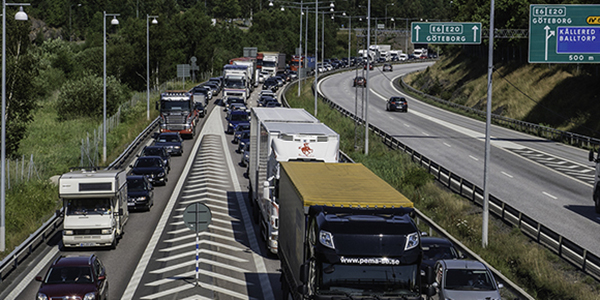Automation of traffic systems will lead to major changes. The European Union’s (EU) CoEXist research project began in June 2017 with the aim of preparing cities and road operators for the introduction of self-driving vehicles. The Swedish National Road and Transport Research Institute (VTI) is the project’s largest stakeholder.

Photo: Mostphotos
CoEXist, which focuses on traffic systems with self-driving vehicles, received €3.5 million in funding from Horizon 2020, the EU’s programme for research and innovation. The aim of the project is to prepare cities and road operators so that conventional vehicles will be able to coexist successfully with an increasing proportion of automated vehicles.
− While technical developments in the field are happening at a very high rate, there is little knowledge of the likely effects of automation on different parts of the traffic system. In this area there is a great deal that we need to find out, says Andreas Tapani, Research Director at VTI.
The project group hopes to answer questions about how and when you need to start taking into account self-driving vehicles in planning for traffic systems and infrastructure. What are the likely effects in terms of, for example, capacity, safety and travel patterns, especially during the introductory phase? When can it be useful to have separate lanes for self-driving vehicles? How can we design a system of traffic signs and signals for the future?
In addition, the stakeholders are working on developing simulation models for traffic flows involving different types of automatic vehicles. This will become the next generation planning tools, necessary for road operators to understand the full scope of the introduction of automated vehicles and to plan under the new conditions.
− VTI is responsible for two work packages that deal with how we use simulation models and how to plan for the introduction of self-driving vehicles, says Johan Olstam, senior project leader at VTI.
Real-life problems in four different cities
CoEXist is collaborating with four different cities, all contributing real-life problems that will have to be solved in the near future: traffic efficiency, cooperation and safety. The four cities are Gothenburg (Sweden), Helmond (Netherlands), Milton Keynes (UK), and Stuttgart (Germany).
Gothenburg is contributing with questions on how self-driving cars might alleviate or create problems during a period of several years when the city will be engaged in major infrastructure changes, and issues that need to be addressed to enable self-driving vehicles to contribute to improved traffic flow, for instance by allowing narrower lanes. The city is also working on the interaction between different types of traffic, and is looking for answers to questions about how to handle interactions between pedestrians, cyclists and self-driving vehicles.
The project
CoEXist started in June 2017 and will be completed in 2020. The project has 15 stakeholders from seven countries: Sweden, Belgium, France, Netherlands, Italy, Germany, and the UK. VTI is the largest stakeholder with responsibility for two of the six work packages.
 Contact:
Contact:
Andreas Tapani
andreas.tapani@vti.se
VTI, Sweden






Follow us: